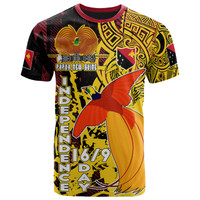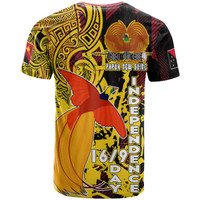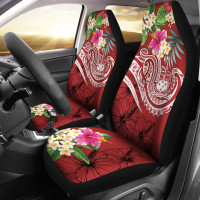10 Interesting Things You Didn’t Know About Hawaiian Culture
Posted by Maris on 23rd Jan 2024
Hawaii, also referred to as the "land of sun and surf," is one of the most well-liked travel destinations worldwide. Many visitors are unaware that Hawaii is home to a fascinating and old culture, which is sometimes inaccurately portrayed by the commercial tourism sector.
Hawaiian culture is complex, a fascinating fusion of old and new customs, and it extends far beyond Waikiki and souvenirs featuring hula skirts.
Continue reading to discover a new aspect of this exquisitely vibrant culture with our list of the Top 10 Hawaiian cultural facts.
1. Native Hawaiians were travelers in traditional Hawaiian culture, and they continue to travel now.

Before arriving in Hawaii, the ancestors of the Native Hawaiians left South-East Asia and settled in a number of locations around the Pacific.
These intrepid explorers were directed by the water and the stars as they made their way across the ocean in canoes.
These ancestors' roots are what give navigation and wayfinding such a significant role in Hawaiian culture and the Hawaiian people's sense of self as oceanic people.
Even now, young Hawaiians still learn how to navigate by stargazing while out in canoes without the need of modern technology. With just one or two stars visible, a competent navigator in Hawaiian culture can find their way home by learning the rising and setting positions of over 100 stars.
However, it's not the two-man plastic canoe you are presumably envisioning that is used for these expeditions. Typically, the canoes are sizable, double-hulled boats that have enough for multiple passengers.
2. Contrary to popular belief, the traditional Hawaiian way of life was more rural.

The majority of tourists associate Hawaii with sun, sand, and surf; yet, although the state is renowned for its stunning beaches, the ancient Hawaiian way of life was founded on rural living.
Many years ago, it was important to live a self-sufficient lifestyle and farm food on the land. Keanae is an isolated town in Maui where people still live a traditional agricultural life centered around farming.
In order to preserve traditional Hawaiian culture, many of the residents of this community farm and grow taro on property that has been in their family for many generations.
Aloha aina, or "love of the land," is a fundamental component of Hawaiian culture that dates back to a period when the land gave the people of Hawaii everything they needed to live independently.
3. Interesting truth about Hawaiian culture: leis come with manners

You probably know what a lei is if you've heard of Hawaii, but you might not be aware that there are proper ways to receive the flower garland.
When given a lei at the airport, many visitors take it off as soon as they board their tour bus, which is disrespectful in Hawaiian tradition.
It is considered rude to take off a lei in public once you receive one that has been handed to you, especially if the giver can see you doing it. Until you can remove the lei in private later, you should leave it on.
4. Hawaii was formerly a monarchy with kings and queens in charge.

One interesting truth about ancient Hawaiian culture that you may not be aware of is that there used to be kings and queens in Hawaii.
After Kamehameha subjugated his neighboring islands and the Hawaiian Islands were united, he became the first King of Hawaii in the late 1700s.
There was a system of land division in place across the kingdom, with the king owning all of the land that was divided into smaller portions.
The king chose local chiefs to manage larger tracts of land known as ahupua'a, which were then further split into smaller portions for each family unit. Generally, one ahupua'a included all the resources required for survival and extended from the mountains to the sea.
Up until the US Missionary Party toppled the monarchy and forced Queen Liliuokalani to abdicate in 1893, the Kingdom of Hawaii persisted.

5. Luau is a term for a dish made with taro that was enjoyed by royalty.

You've probably heard of a luau if you're thinking about traveling to Hawaii.
These gatherings, which typically feature a cook-up or feast of some kind along with music and dancing, are an important component of Hawaiian culture both historically and currently.
On the other hand, the name luau has intriguing history. These gatherings were called paina, which means dinner party, or aha aina, which means feast, in the prehistoric Hawaiian language.
The term "lauu" really refers to a traditional Hawaiian dish cooked from taro, which is akin to a potato and is a favorite among the kings and queens of Hawaii when they host these gatherings.
6. Kaho'olawe, the Sacred Island, and its many and varied lives

Known as the Sacred Island, Kaho'olawe has been utilized for a variety of purposes by the US and Hawaiian governments, not all of which have been sacred.
Because there was little water and other resources on the island, Kaho'olawe was only ever home to a few hundred people at a time.
Navigators used to travel to the island to hone their star-reading and navigational skills in the days before recorded Hawaiian history. With five nearby islands visible from Kaho'olawe's tallest peak, it's an ideal location for navigators to familiarize themselves with their surroundings.
After Christian missionaries arrived, Kaho'olawe was converted into a prison colony housing inmates serving life sentences, however the colony was only operational for fewer than 30 years. The paucity of resources on the island doomed a string of failed ranching endeavors that ensued.
The island served as a US military training facility during World War II after Pearl Harbor was bombed. The island was utilized by the military as an explosives test site both during and after the war, and this practice continued until 1990.
Now that the island has largely been cleared of unexploded ordinance, it is once more a part of the State of Hawaii.
Volunteers are working to reforest the island, and traditional Hawaiian education and culture are once again practiced there.
7. The only US state with two official languages is Hawaii.

Because of the significance of their language to the native Hawaiian population, Hawaii has two official languages: Hawaiian and English.
Hawaii passed a law outlawing the instruction of Hawaiian or its usage in public schools in 1896.
During this period, the language almost vanished and a large portion of Hawaiian culture was lost.
In order to respect their language and culture, it is now considered acceptable to refer to locations by their Hawaiian names when visiting Hawaii.
8. Hawaii possesses a barred island

Hawaii has a banned island, did you know that? The population of the privately owned island of Niihau ranges from 70 to 170.
The precise population of the island is unknown, and outsiders must obtain permission from the proprietors in order to visit.
Of all the Hawaiian culture facts about Niihau, the most fascinating one is how it became a private island and the reason why tourists are usually not permitted. On the understanding that she would shield the island and its people from outside influence, the ancestor of the brothers who currently hold the island purchased Niihau from a Hawaiian king.
Because of this commitment, which the owners still keep, authorization is needed in order to visit. Running water, stores, or other contemporary amenities are nonexistent on the island, and the only sources of electricity are solar power or generators. The island still serves as a peek into earlier Hawaii.
In order to prevent an outbreak on the island during a polio epidemic in Hawaii in 1952, visitors were needed to show a doctor's certificate attesting to their lack of polio. This led to the naming of the island "Forbidden Island."
9. You might follow bad luck…and it moves across rocks.

This is a fun information about superstitious Hawaiian culture for you: For Hawaiians, taking lava rocks down from a volcano is unlucky.
There are lots of lava rocks on the ground in Hawaii Volcanoes National Park, and many visitors will try to carry one home.
But thieves of lava rocks better be careful—bad luck will pursue you! Packages containing lava rocks are sent from all over the world to Hawaii and are received by the National Park without a return address.Maybe the senders indeed had the ill luck that is rumored.
10. It's considered courteous to save leftovers in Hawaiian society sometimes!

In contemporary Hawaiian society, it is customary to "make plate" as one departs from a party or event.
In order to save the host from having to clean up after themselves, this expression refers to each visitor or family assembling a plate of food from the party's leftovers to take home.
If you're the kind of person who likes to munch at midnight, this might be the custom for you!
Concluding remarks regarding Hawaiian culture
There is so much more to Hawaiian culture than just surfing, shaka hand gestures, and floral-print clothes.
Make sure to venture outside of Waikiki when you're there to hear from locals about traditional and contemporary Hawaiian culture; you could pick up a few new cultural tidbits!
















